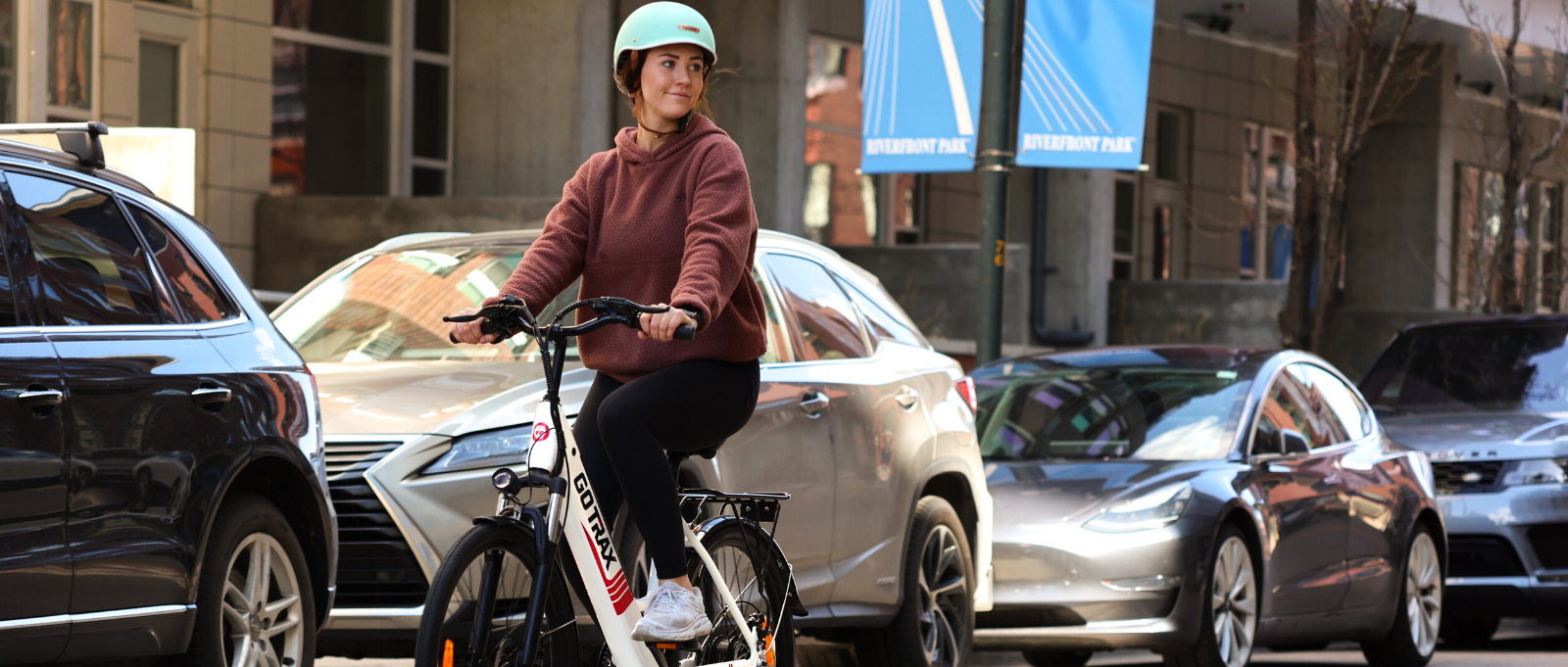April 17, 2022
Topic
As part of California’s commitment to combating climate change, the state has long provided rebates to help residents buy electric cars. But we’ll need to do more to reduce driving to meet our climate goals so, last year, CalBike helped win a $10 million grant for an electric bike purchase incentive program, to be administered by the California Air Resources Board starting in July of 2022.
E-bikes make biking an option for people who might not be able to get where they need to go on a traditional bike. The electric boost can help people ride farther, carry more, and arrive at work or school without breaking a sweat. And the extra speed can increase safety, especially on streets shared with heavy car traffic.
E-bikes have been proven to replace car trips, so they’re an excellent way to help California avert climate disaster (and traditional bikes are as well). Plus, they improve health. People tend to ride longer distances with electric assist, so e-bike riders get as much exercise as people on traditional bikes. We hope this program will help increase bike ridership and add to the safety in numbers of riders on the street.
What’s in California’s e-bike program?
The details of the e-bike program will not be determined until after CARB chooses a vendor to administer the grants. CARB is accepting applications until May 11, 2022, and will choose a vendor no later than June 10, 2022. However, we do know some of the basics:
- A grant, not a rebate: Rebates, which give you tax credits or refunds after you pay for an electric vehicle, are less effective at helping low-income people make a large purchase like an e-bike. Therefore, the program will provide vouchers that can be applied to the cost of an e-bike, reducing the amount of cash needed upfront.
- Income eligibility: Unlike electric vehicle rebates, the e-bike grants will be restricted to California residents with qualifying incomes, at least for the first $10 million allocation.
- Types of bikes: The purchase incentives can be used for a wide variety of e-bikes, including those designed for people with disabilities, folding bikes, and utility bikes that can carry cargo or passengers. Of course, the program also covers standard commuter e-bikes.
The vendor will determine additional details, such as the amount of the vouchers.
How can local governments help the e-bike program be a success?
To succeed, California’s e-bike voucher program needs to be used. CalBike hopes that the grant funding is used quickly, demonstrating the need to make an annual budget allocation to continue the program.
One of the biggest challenges of the voucher program is spreading the word in the community. We’re hoping to partner with nonprofits and community groups to connect their members to this vital resource. Local governments can play a role, too, by including information about where to apply on your website and in emails to residents. That will help direct more of the state e-bike funding into your community.
Another critical piece of the puzzle can only come from local government: more bike lanes. As more people ride, expect growing demand for safe bikeways. Communities can prepare by planning safer bike routes and seeking funding now. (See also: “Quick-Build Puts Bike-Friendly Design within Reach for California Communities.”)
More bikes coming soon to a street near you
Communities sometimes put up fierce resistance to new bikeways, but protected bike lanes have been proven to make streets safer for all road users, including pedestrians and people in cars. Studies also show that bike lanes boost local businesses. Getting more people on bikes provides a community-wide benefit by reducing harmful vehicle emissions. And biking is a terrific way to boost mental health, something we all need after grueling pandemic years. Promoting the voucher program will bring more of that joy to your community.
If you have questions about the e-bike purchase incentive program, please feel free to reach out to CalBike.
Written by Laura McCamy at the California Bicycle Coalition





